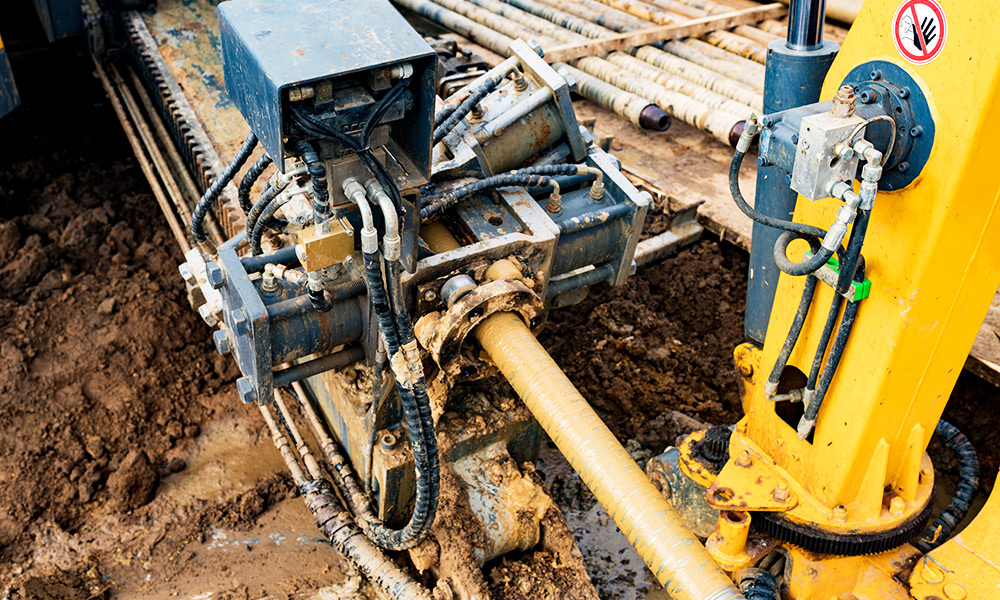Directional bore drilling has transformed the way we navigate the subsurface environment, allowing engineers and geologists to access resources and install utilities with unprecedented precision. This state-of-the-art technique enables drilling not only upwards but also horizontally, thus considerably enhancing the productivity of operations in diverse industries. As cities develop and the demand for energy and infrastructure rises, understanding the intricacies of directional drilling becomes essential for experts and novices alike.
In this study of directional drilling, we will delve into its evolution, the technologies that power it, and the countless applications that highlight its significance in fields such as the energy sector, clean energy, and urban construction. From minimizing surface impact to overcoming the difficulties of tough terrains, directional drilling is at the forefront of modern engineering approaches. Whether you are looking to learn the fundamentals or seeking understanding into future innovations and progress, this guide will provide a detailed summary of what makes directional drilling a cornerstone of contemporary construction projects.
#### Comprehending Orientation Drilling
Directional drilling represents a technique enabling teams to access petroleum, natural gas, and additional resources located beneath the terrestrial surface while reducing environmental footprint. Different from standard straight boring, angular boring enables teams to form inclined holes that can reach various sites from a single drilling location . This method not only improves material extraction while also minimizes the number of site locations necessary for drilling operations , making it especially beneficial in urban and delicate environments .
The process begins with careful planning , where engineers determine the optimal drill path based on geological information and project requirements . Orientation drilling incorporates advanced tech, featuring specific drilling tools and live tracking systems , to guarantee accuracy and productivity. This feature is crucial in navigating intricate subsurface structures and steering clear of obstacles , including existing utilities or sensitive ecological locations.
As the industry continues to advance , orientation drilling has become an integral part of diverse sectors , including petroleum and natural gas utilities , and renewable resources. Its versatility enables its use in uses extending from underwater projects to the creation of geothermal initiatives. The relentless improvement in technology , in tandem with rising environmental awareness , consistently drive the limits of the potential of directional drilling , setting it as a key practice for modern infrastructure development .
Advantages of Horizontal Drilling
Directional drilling offers countless benefits over conventional drilling methods, primarily due to its potential to drill in multiple directions rather than just upward. This flexibility allows for the drilling of boreholes from a one point, minimizing the need for multiple setups and reducing the overall footprint of drilling operations. By reaching multiple targets through fewer drilling sites, firms can substantially cut down on environmental disruption while optimizing resource extraction.
Another key benefit, directional drilling is its productivity in metropolitan and sensitive locations. This technique is particularly useful when navigating around existing facilities, such as buildings, roads, and other infrastructures. By drilling horizontally under urban environments, businesses can finish projects with minimal surface disruption, allowing for faster installations and diminishing the need for large-scale excavation. This ability is essential in densely populated areas where conventional drilling would face many logistical challenges.

Moreover, directional drilling can lead to significant cost reductions. By lowering time on site and decreasing the amount of material and labor needed, businesses can boost their profits. The ability to reach deeper reserves of oil, natural gas, or other resources that are not reachable through vertical drilling contributes to the economic feasibility of projects. https://gmaccontractors.com/ , these benefits make directional drilling an increasingly preferred choice in multiple industries, demonstrating its importance in modern drilling practices.
Future Trends in Directional Drilling
As the sector evolves, the integration of machine AI and mechanization is reshaping the landscape of directional drilling. These systems enhance boring accuracy by evaluating real-time data, improving drill paths, and foreseeing potential issues before they arise. The power to make prompt adjustments based on comprehensive analytics not only simplifies operations but also significantly reduces downtime and financial burdens associated with unforeseen challenges.
Moreover, progress in software and monitoring devices are creating a more cohesive approach to guided boring. The implementation of digital resources enables better planning and execution of boring initiatives by providing exact geological information and real-time updates. Managers can monitor conditions from a distance, allowing for faster decision-making processes that enhance total initiative efficiency. This electronic shift ensures that boring activities can be adjusted through insightful insights, leading to better results and eco-friendliness.
Finally, the shift towards eco-friendly infrastructure continues to shape directional boring methodologies. With increasing demand for green friendly solutions, companies are concentrating on new ideas that lessen natural effects while delivering successful outcomes. Practices such as drilling fluid recycling and the use of eco-friendly boring fluids are being embraced to further minimize ecological effects. This focus not only matches with global eco-consciousness goals but also positions guided drilling as a essential component in the move towards cleaner power endeavors.
